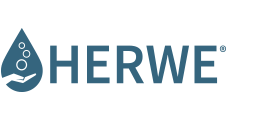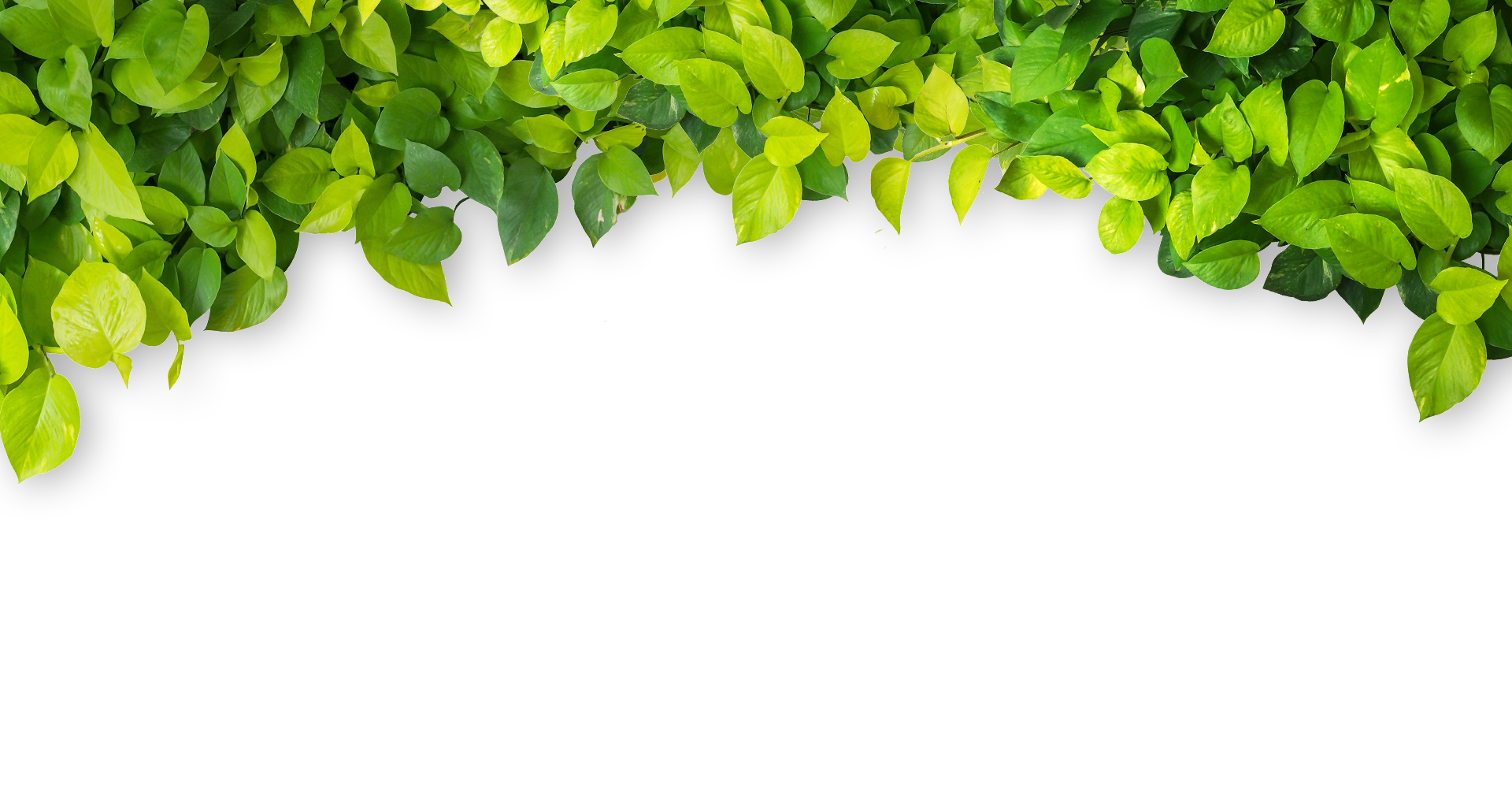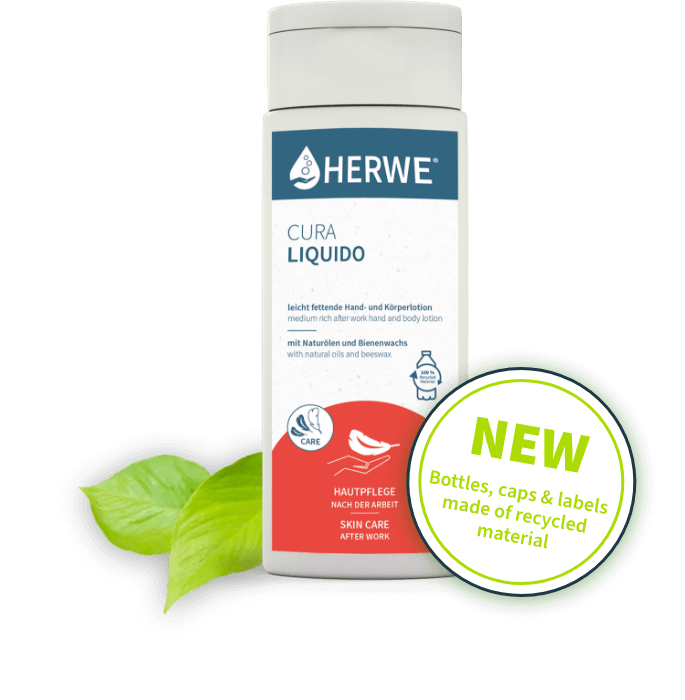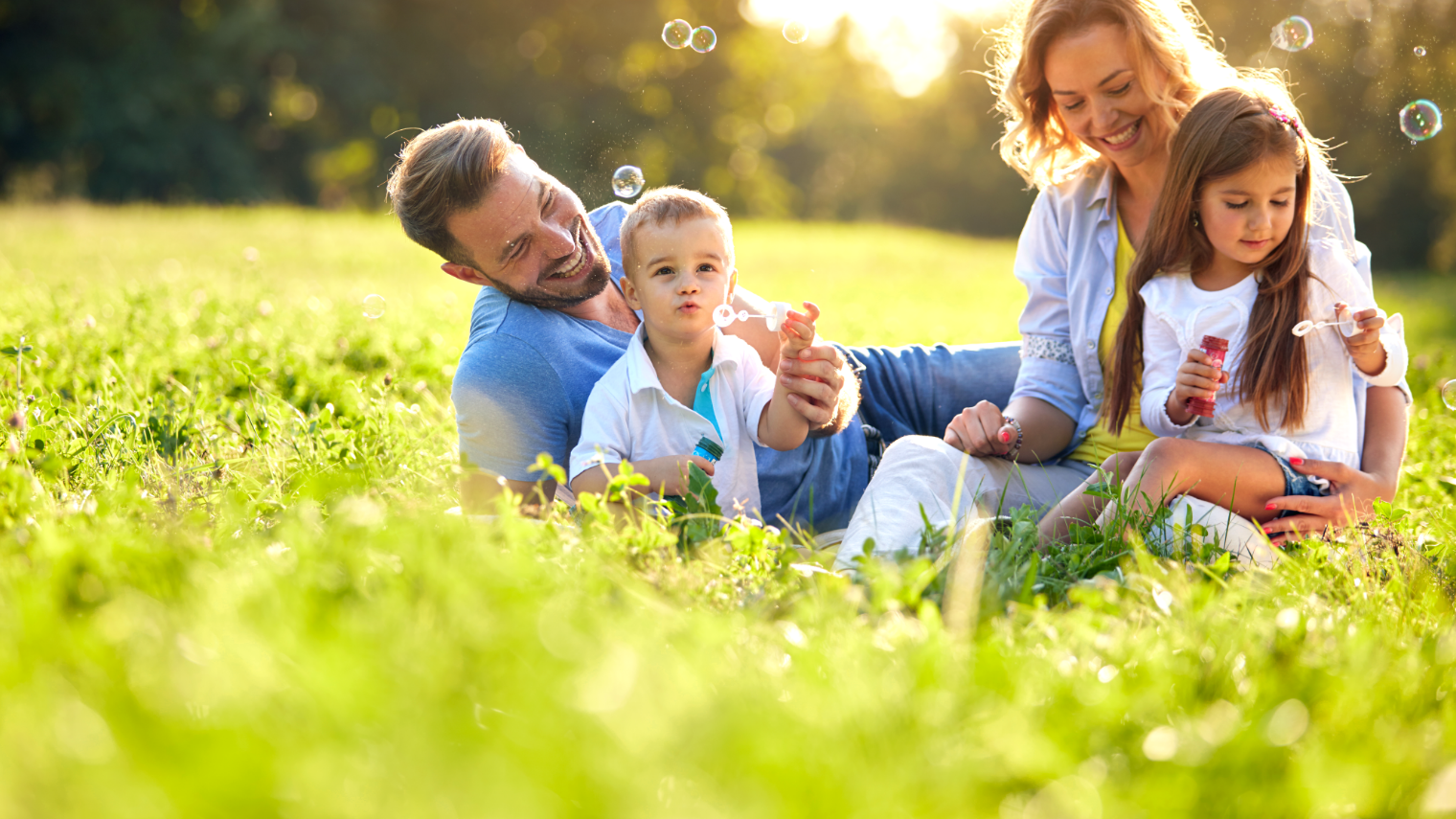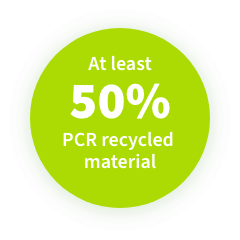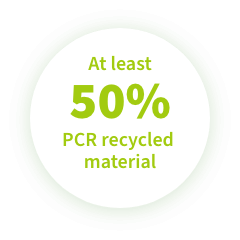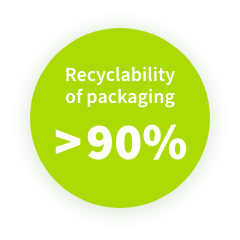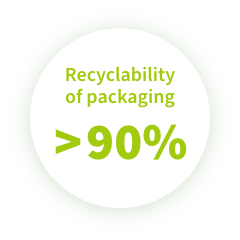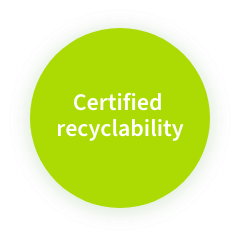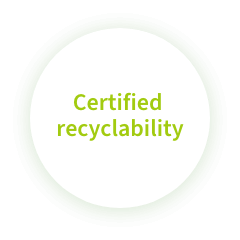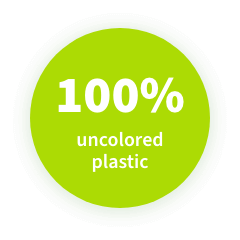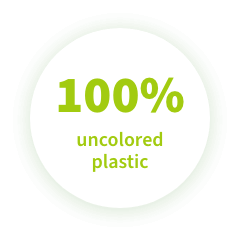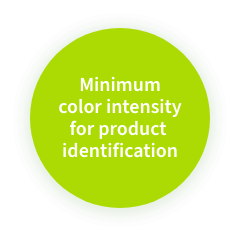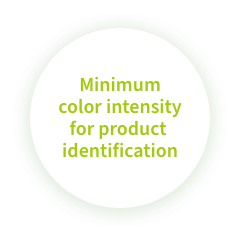We are forging ahead
We are all challenged to keep our planet livable for future generations.
This includes, above all, the economical use of existing resources. At Herwe, we therefore attach great importance to the sustainability of our packaging.
The result is the HERWE GREEN:pack
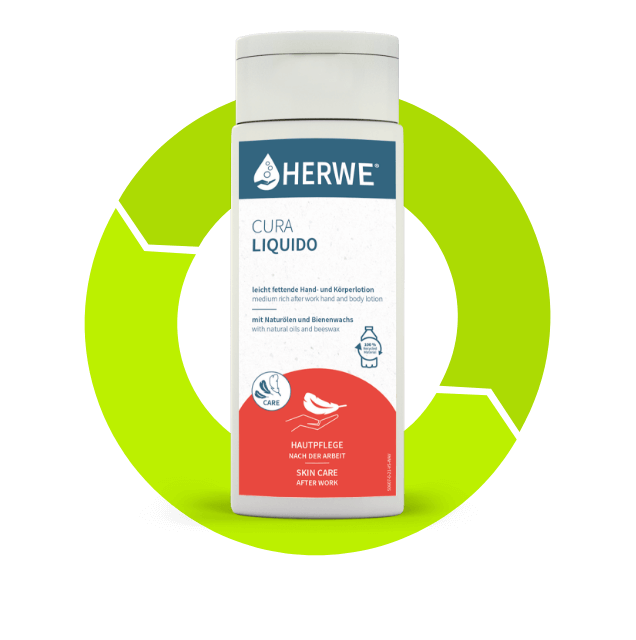
OUR NEW RECYCLING PACKAGING
Your skin in good hands.
Which materials can we use to design packaging for your intended purpose in such a way that it ensures the highest possible recyclability and thus reusability while using the highest possible proportion of secondary raw materials and at the same time fulfilling its basic functions?
For us as a young and innovative company of cosmetic occupational safety and hygiene application, exactly this core question plays a major role.
EMPTY BOTTLE – WHAT
COMES NEXT?
PACKAGING WASTE IS RECYCLABLE MATERIAL
The basic idea of recycling
18.9 million tons of packaging waste. According to the Federal Environment Agency, this is the balance for Germany alone in 2018. However, to speak of waste is fundamentally wrong. Because these are valuable resources (recyclable materials) that can be recycled and thus reused.
Recycling means nothing more than "the reuse or reprocessing of waste". The recyclable materials paper, cardboard, carton, glass, wood and plastic can largely be recycled.
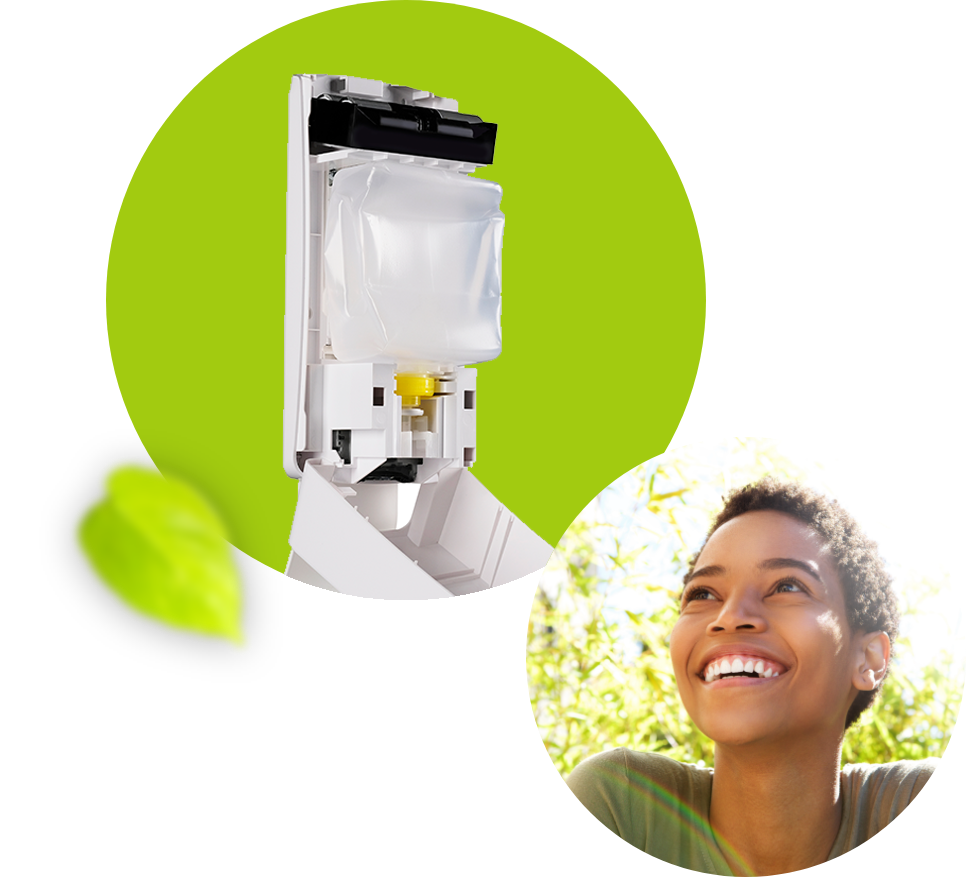
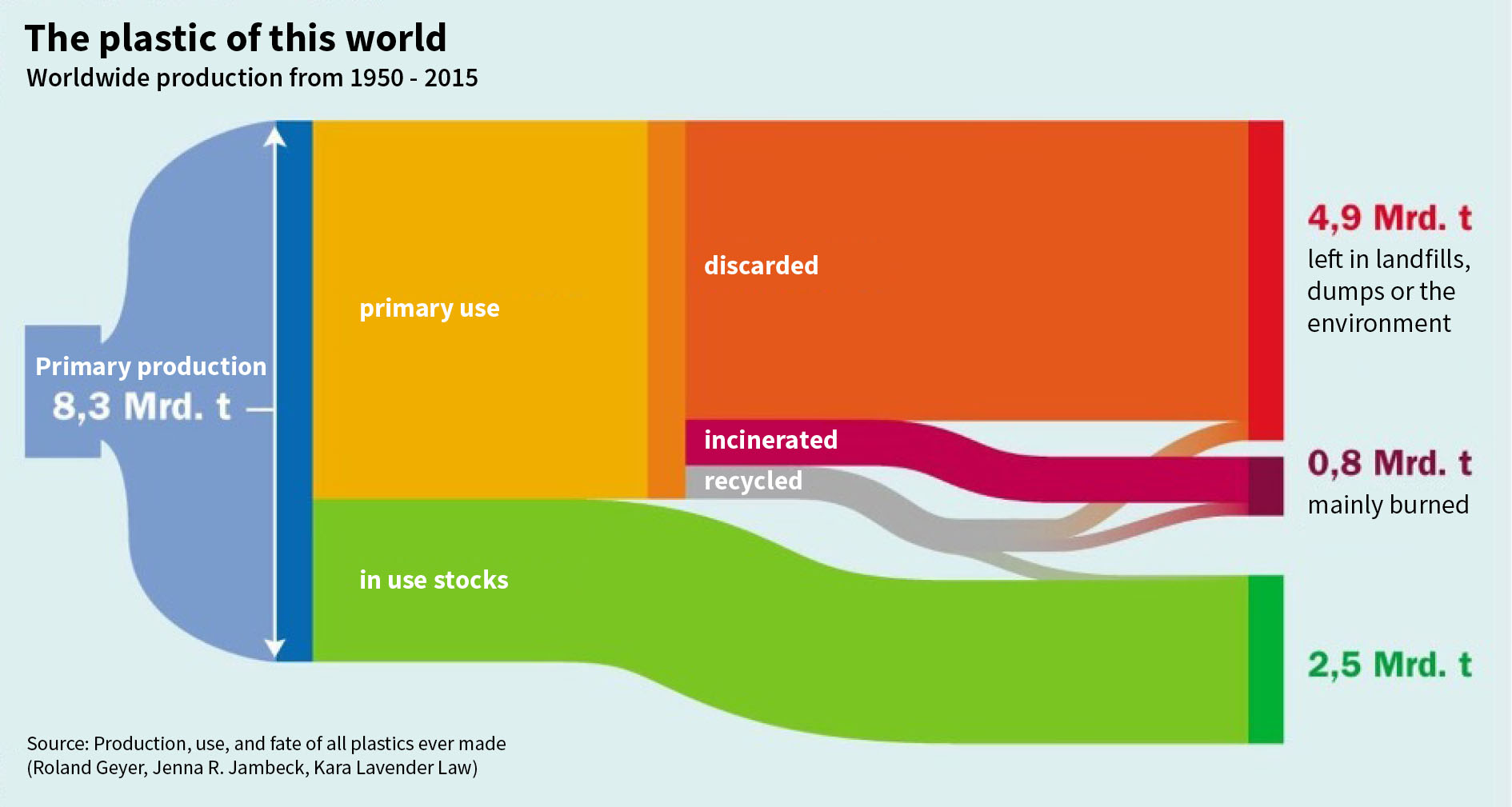
RECYCLING OF PLASTIC
MATERIALS
The way of recycling is crucial!
Paper, glass and metals have been recycled quite successfully for a long time. The recycling of plastic materials is more difficult. There are over 200 different types of plastic. The best known are polyethylene (PE), polypropylene (PP) and polyethylene terephthalate (PET). In the packaging sector, these plastics are often used in combinations.
The optimal goal of recycling is the greatest possible recovery of the raw materials originally used, so that they can be reintroduced into the material cycle as high-quality starting materials (secondary raw materials) for new products. There is no doubt that energetic recovery (incineration) is the worst of all possible options. The best solution of recovery is material recycling. In material recycling, the materials used are not chemically altered. The recyclable material is processed, cleaned and separated by type. The purer these types are and the higher their quality, the higher the quality of the products recovered from them.
PACKAGING MATERIAL
"Curse and blessing" of plastic
Due to its properties, plastic is a very popular packaging material. The advantages and disadvantages show very clearly that some advantages of plastic are also its disadvantages. Depending on the situation and application, it must be weighed up what is best for people and the environment. However, it is not always easy to evaluate this.
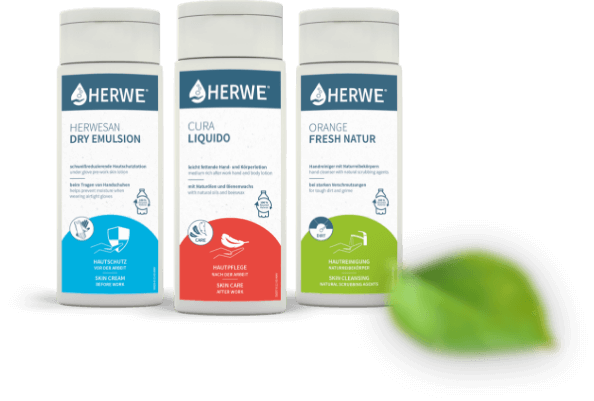
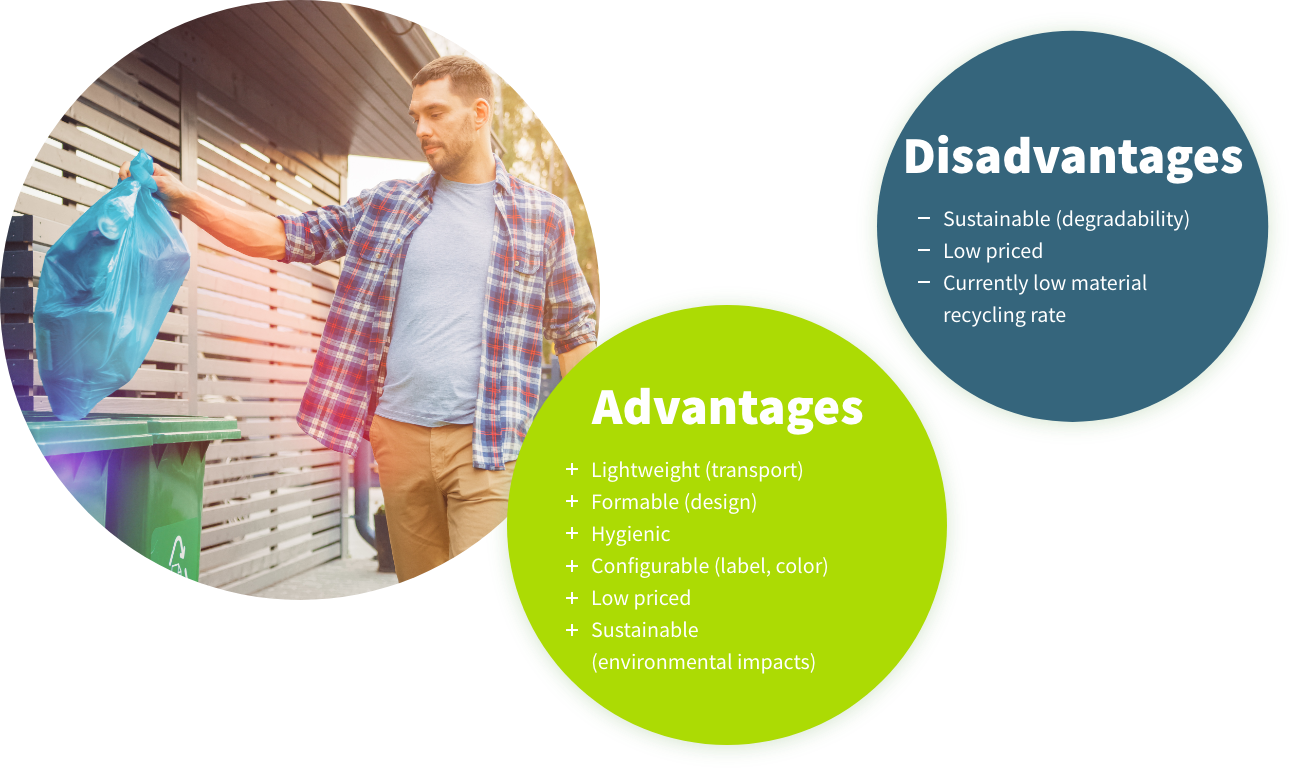
Conclusion
With the GREEN:pack, we have taken a big step! Be assured - the topic will be further advanced.
More Herwe product lines will soon be switched to the GREEN:pack.
But it is most important that you get your own idea. Study the topic of circular economy and sustainability in depth. The importance of this cannot be overstated.
TIPS AND HANDLING OF PACKAGING
PROPER WASTE SEPARATION
How does proper waste separation work in Germany? In order to separate your household waste, you have various waste containers available at home. But not all waste can be disposed of in this way. Here you can learn everything about waste separation:
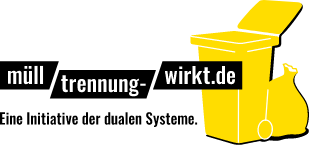
EXPLANATION OF TERMS
- SustainabilitySustainability affects all areas of our lives and economies. In terms of the ecological perspective, it can be said that sustainability is aimed at the responsibility to treat existing resources with care so that they are preserved in the long term. Sustainability is a task for society as a whole. We should all behave in such a way that all living beings can continue to live well on our planet in the future.
- RecyclingRecycling as defined by the German Closed Substance Cycle Waste Management Act (KrWG) is any recycling process by which waste is reprocessed into products, materials or substances either for the original purpose or for other purposes. The materials produced in this way are referred to as recyclate or reclaim.
- RecyclabilitySuitability of a product that contributes to closing material cycles within the framework of established collection and recycling structures. Especially true for packaging:
"Recyclability is the individual gradual suitability of a packaging or product to actually substitute material-identical virgin material in the post-use phase"; "actually" here means that collection and recycling structures on an industrial scale form the prerequisite. (cyclos-HTP 2019) - PIR (Post-Industrial Recycling)Post-industrial recycling of plastics involves the recycling of waste produced during the manufacture or processing of a plastic. They have the advantage of being mostly mono-material. So when these materials are reused, inefficiencies in production and waste can be reduced. Collection and reuse is relatively simple. However, because these PIR materials have not yet been included in packaging or products, the claim to consumers as "recycled material" is considered misleading by some stakeholder groups.
- PCR (Post Consumer Recycling)Post-consumer recycling involves the recycling of packaging waste that has been used by the end consumer and subsequently enters the recycling loop. In 2019, this amounted to a total of around 5.4 million tons. 60 percent of all post-consumer waste is packaging waste. The recycling of PCR materials is considerably more demanding than PIR and aims to recover valuable resources for the material cycle.
The reuse of post-consumer recyclate in overall plastics production is currently still very low. - Circular EconomyThe circular economy is a model of production and consumption in which existing materials and products are shared, leased, reused, repaired, refurbished and recycled for as long as possible. In this way, the life cycle of products is extended.
In practice, this means that waste is reduced to a minimum. After a product reaches the end of its life, the resources and materials remain in the economy as much as possible. They are thus productively reused again and again in order to continue generating added value.
The circular economy is in contrast to the traditional, linear economic model ("throwaway economy")
 EN
EN